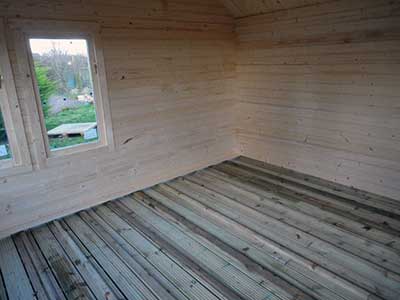When people think of timber flooring, they almost always think of hardwood, but one of the oldest and most beautiful types of timber flooring is a softwood: pine. Yellow Pine is the hardest of the softwoods, but it is not as hard as either oak or bamboo. Nevertheless, if treated well, it can be extremely durable.
Both Yellow Pine and the softer White Pine have been used in flooring for centuries. Pine wood is plentiful, easy to work with and has a warm, golden finish that darkens with age.
Traditional plank flooring wider than today’s
Traditional pine flooring consisted of wide, flat-sawn planks. Sometimes they were painted and sometimes they weren’t finished at all, but usually, they were rubbed with homemade lye or a mixture of linseed oil, turpentine and coal tar. The resulting finish protected the wood, but didn’t shine. Wax was buffed onto the floor to give it the familiar shine we see in modern floors.
Pine can be dented or scratched fairly easily by something heavy striking the floor, or even by pets’ claws. If the finish is linseed oil, a scratch can be repaired simply by rubbing more linseed oil in to cover it up. Most pine flooring today is protected by a polyurethane finish. Polyurethane provides more durable protection against scratches. However, pine can still be dented, so it’s not recommended for use in areas where it’s likely to experience rough treatment.
Pine laminate a good choice for DIY
Pine is available in tongue-and-groove planks or as laminate flooring. It is best installed over a board-based subfloor such as plywood or OSB. If you are a do-it-yourselfer, laminate is the easiest to install, but plank installation is still viable. Just like other woods, pine will expand and contract as it absorbs and releases moisture. It is best to stack the planks in the room where they are to be installed for several days to let them acclimatise to the room’s humidity.

The appearance of pine depends on its grade. With higher grades, the planking is more expensive and there are fewer knots. Some decorators prefer a grain with a lot of knots, and a whole sub-genre of pine flooring and wall coverings is known as ‘knotty pine’.
Sustainable sourcing
A warning about knotty pine sourced from Australia: it is probably Hoop Pine, our only native species, and it might come from a natural forest, where its harvest is less sustainable than it would be with trees grown on a commercial plantation. Hoop Pine commercial plantations do exist, however, making much of Australian-sourced pine an environmentally sound choice. At least six different species of pine are grown commercially here. If you’re concerned about sustainable production, then just look to make sure the pine products you buy have an Australian Forestry Standard (AFS) stamp, or one from an international organisation like FSC or PEFC.
